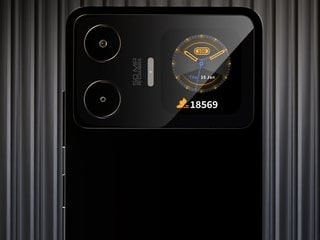- Home
- Transportation
- Transportation News
- Waymo CEO Says Its Self Driving Tech Would Have Handled Uber Crash Safely
Waymo CEO Says Its Self-Driving Tech Would Have Handled Uber Crash Safely
Nearly a week after an autonomous Uber SUV claimed the first life in testing of self-driving vehicles, the CEO of another tech company says he is confident its cars would have performed differently under the circumstances.
John Krafcik, chief executive of Waymo, formerly Google's autonomous-vehicle project, said Waymo's cars are intensively programmed to avoid such calamities.
"I can say with some confidence that in situations like that one with pedestrians - in this case a pedestrian with a bicycle - we have a lot of confidence that our technology would be robust and would be able to handle situations like that," Krafcik said Saturday during a panel at the National Automobile Dealers Association convention in Las Vegas.
Krafcik had been asked directly whether a Waymo car would have reacted differently than the self-driving Uber.
"I want to be really respectful of Elaine [Herzberg], the woman who lost her life and her family," he said. "I also want to recognise the fact that there are many different investigations going on now regarding what happened in Tempe on Sunday."
His assessment, he said, was "based on our knowledge of what we've seen so far with that accident and our own knowledge of the robustness that we've designed into our systems."
Krafcik was referring to 49-year-old Elaine Herzberg, who was killed March 18 when a self-driving Uber struck her as she walked a bicycle across a Tempe, Arizona, street. Video footage graphically illustrated how the autonomous Volvo XC90 and its backup driver failed to protect Herzberg, who was outside a marked crosswalk, as she walked across the road at about 10:30pm.
Waymo is testing its self-driving fleet in parts of Phoenix, where autonomous taxis are shuttling some members of the public. The company has a fleet of Chrysler Pacifica minivans with custom-designed hardware that undergoes rigorous testing, including in open and closed environments and through rigorous computer simulations, according to a Waymo spokeswoman.
Asked for the basis on which Krafcik made his claim, Waymo pointed to its hardware and testing regimen, which includes closed-course testing at night in which pedestrians sometimes unexpectedly enter the roadway, according to the company. The cars operate on public roads and pull data from those situations to create simulations of cities where Waymo operates, such as Phoenix and Austin. Under that setup, Waymo says, the company can repeat a single testing scenario thousands of times.
Waymo says its equipment has run through thousands of scenarios focused exclusively on avoiding collisions involving pedestrians. The vehicles are equipped with custom LiDAR, radar equipment and other sensors, according to Waymo. (LiDAR stands for light detection and ranging.)
Last fall, Waymo became the first company to issue a detailed safety report to federal officials on its self-driving vehicle program, under a voluntary self-assessment program. The 43-page safety report detailed the company's efforts to account for everyday road scenarios that lead to automobile crashes:
"We've staged people jumping out of canvas bags or porta-potties on the side of the road, skateboarders lying on their boards, and thrown stacks of paper in front of our sensors," Waymo said in its report.
Uber has yet to submit a safety letter to the National Highway Traffic Safety Administration but said it is in the process of doing so. The company has said its self-driving cars are equipped with a suite of sophisticated equipment: a top-mounted LiDAR unit, which relies on lasers to scan the environment and provide an unobstructed view of the car's surroundings; and seven cameras, including a front-facing lens observing for factors such as pedestrians, and side and rear cameras for a more comprehensive view - in addition to other components.
An Uber spokeswoman did not respond directly to questions about Krafcik's claims, but said last week: "We believe that technology has the power to make transportation safer than ever before and recognize our responsibility to contribute to safety in our communities. So as we develop self-driving technology, safety is our primary concern every step of the way. We're heartbroken by what happened this week, and our cars remain grounded. We continue to assist investigators in any way we can."
On Saturday's panel in Las Vegas, Krafcik said he would not speculate on what went wrong in the Uber crash. The National Transportation Safety Board is among the agencies investigating the wreck.
"For those of us at Waymo, it was a very sad day," Krafcik said. "Because that was an accident that was in a car that had technology representing the self-driving space. And for those of us at Waymo it is that mission of safety and avoiding accidents just like that one that really brings us all together as a company. It struck us in a really major way."
© The Washington Post 2018
Catch the latest from the Consumer Electronics Show on Gadgets 360, at our CES 2026 hub.
Related Stories
- Samsung Galaxy Unpacked 2025
- ChatGPT
- Redmi Note 14 Pro+
- iPhone 16
- Apple Vision Pro
- Oneplus 12
- OnePlus Nord CE 3 Lite 5G
- iPhone 13
- Xiaomi 14 Pro
- Oppo Find N3
- Tecno Spark Go (2023)
- Realme V30
- Best Phones Under 25000
- Samsung Galaxy S24 Series
- Cryptocurrency
- iQoo 12
- Samsung Galaxy S24 Ultra
- Giottus
- Samsung Galaxy Z Flip 5
- Apple 'Scary Fast'
- Housefull 5
- GoPro Hero 12 Black Review
- Invincible Season 2
- JioGlass
- HD Ready TV
- Laptop Under 50000
- Smartwatch Under 10000
- Latest Mobile Phones
- Compare Phones
- OPPO A6c
- Samsung Galaxy A07 5G
- Vivo Y500i
- OnePlus Turbo 6V
- OnePlus Turbo 6
- Itel Zeno 20 Max
- OPPO Reno 15 Pro Mini 5G
- Poco M8 Pro 5G
- Lenovo Yoga Slim 7x (2025)
- Lenovo Yoga Slim 7a
- Realme Pad 3
- OPPO Pad Air 5
- Garmin Quatix 8 Pro
- NoiseFit Pro 6R
- Haier H5E Series
- Acerpure Nitro Z Series 100-inch QLED TV
- Asus ROG Ally
- Nintendo Switch Lite
- Haier 1.6 Ton 5 Star Inverter Split AC (HSU19G-MZAID5BN-INV)
- Haier 1.6 Ton 5 Star Inverter Split AC (HSU19G-MZAIM5BN-INV)

















